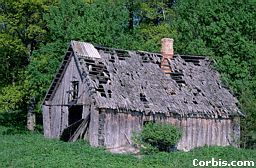| Group |
Baltic (with Old Prussian,
Lithuanian etc.), East Baltic (with Lithuanian, Latvian and Selonian) |
| Geography |
Lithuania, parts of north-eastern Poland |
| History |
When the modern people of Latvia was only a group of tribes, the most
important of them were Latgalian, Zemgalian, Curonian. Semigalians or Zemgalians
(Zem'gola in Russian) used to live in the central parts of Latvia, north
to the Daugava (Dvina) river. They went through the initial feudalism forming
and in the 12th century together with Latgalians founded two little principalities:
Talava and Gertsike, the last governed by Russian princes. Semigalians
had close relations with Eastern Slavs, further Kiev Russia, Lithuanian
principalities and bordered with Livonians and Estians, Finnish tribes
who lived north to them. In the beginning of the 13th century Teutonic
Knights conquered the lands of Prussians, Curonians, and in 1212 came to
Semigalia. In two years the struggle of Semigalians was suppressed, in
1214 the Talava principality was conquered. |
| Phonetics |
The Semigalian language carried several features characteristic also
to Curonian and somehow close to Latvian. Common Baltic k,
g in their soft variety bacame c, dz in Semigalian.
All long vowels and diphthongs at the end of the word were reduced to simple
short vowels. |
| Morphology |
Semigalian did not leave any written samples, so we had to study the
language basing only on place names and "water" names in the regions of
Latvia. This is why it is quite hard to say something definite about the
morphological system of Semigalian. |
| Lexicon |
The Semigalian vocabulary used many Slavic words, also some were borrowed
from Livonian and Estonian, Finnish languages. |
| Writing |
No writing |
| Close Contacts |
Contacted mainly with Latgalian (further Latvian), Curonian, Lithuanian. |
| Picture |
 |
| More info |
|
